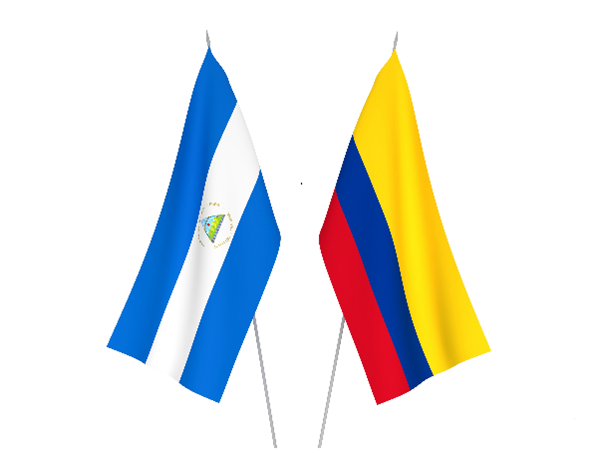
On 21 April 2022, the International Court of Justice (the “ICJ” or “Court”) issued its merits ruling in Alleged Violations of Sovereign Rights and Maritime Spaces in the Caribbean Sea, brought by Nicaragua against Colombia. The Court upheld most of Nicaragua’s claims, ruling that Colombia had violated Nicaragua’s sovereign rights and jurisdiction in Nicaragua’s exclusive economic zone (“EEZ”). The ICJ upheld one of Colombia’s counter-claims and dismissed the other.
[Read more]
The case stems from the Court’s 2012 ruling in Territorial and Maritime Dispute (Nicaragua v. Colombia), which awarded Colombia sovereignty over certain maritime features in the Caribbean Sea and delimited a single maritime boundary for the continental shelf and EEZ of both States up to 200 nautical miles. Following that decision, Colombia withdrew from the Pact of Bogotá on 28 November 2012, pursuant to which Colombia had recognised the jurisdiction of the ICJ. The following year, on 26 November 2013, Nicaragua initiated proceedings in the present case in respect of certain conduct by Colombia in the area that had been delimited. In 2016, the Court upheld its jurisdiction under the Pact of Bogotá, finding that a “dispute” existed regarding alleged violations by Colombia of Nicaragua’s rights in maritime zones declared to appertain to Nicaragua in the 2012 ruling.
First, by a 10-5 majority, the ICJ ruled it had jurisdiction ratione temporis over Nicaragua’s claims, because the “dispute” extended to facts or events after 27 November 2013, the date on which the Pact of Bogotá ceased to be in force for Colombia. For the Court, those alleged incidents were “of the same nature as those that allegedly occurred before 26 November 2013”. As a result, they gave rise to the question of whether Colombia had breached its customary international law obligations to respect Nicaragua’s rights in its EEZ.
Second, by a 10-5 majority, the Court held that Colombia had violated Nicaragua’s sovereign rights and jurisdiction by (i) interfering with fishing and marine scientific research activities of Nicaraguan-flagged or Nicaraguan-licensed vessels; (ii) interfering with the operations of Nicaraguan naval vessels in Nicaragua’s EEZ; and (iii) purporting to enforce conservation measures in in Nicaragua’s EEZ.
Third, by a 9-6 majority, the ICJ ruled that Colombia had further violated Nicaragua’s sovereign rights and jurisdiction by authorising fishing activities in Nicaragua’s EEZ. As a result, the Court ordered Colombia to cease that conduct.
Fourth, by a 13-2 majority, the ICJ ruled that Colombia’s “integral contiguous zone” established by a 2013 Presidential Decree (as amended) (“ICZ Decree”) did not comply with customary international law. The Court noted that Article 33 of UNCLOS reflected customary international law as regards the powers that a coastal State may exercise in the contiguous zone and the limit of 24 nautical miles. The Court found that Colombia had violated customary international law because (i) Colombia’s contiguous zone around the San Andrés Archipelago exceeded 24 nautical miles into Nicaragua’s EEZ; and (ii) the ICZ Decree conferred powers on Colombia “to exercise control over infringements of its laws and regulations” not permitted under Article 33(1) of UNCLOS.
Fifth, by a 12-3 majority, the Court ordered Colombia, by means of its own choosing, to bring into conformity with customary international law those provisions of the ICZ Decree relating to maritime areas awarded to Nicaragua in 2012.
Sixth, by a 14-1 majority, the Court found that Colombia had not violated Nicaragua’s sovereign rights by issuing oil exploration licences, as Nicaragua had failed to prove that Colombia was continuing to offer or award licenses for petroleum blocks in Nicaragua’s EEZ. The Court also rejected Nicaragua’s request for compensation, as Nicaragua “did not offer evidence demonstrating that Nicaraguan-flagged or Nicaraguan-licensed vessels or their fishermen suffered material damage or were effectively prevented from fishing as a result of Colombia’s acts of interference by its naval frigates”.
Seventh, by a 12-3 majority, the ICJ upheld Colombia’s counter-claim that Nicaragua’s straight baselines established by a 2013 Decree (as amended) violated customary international law as reflected in Article 7(1) of UNCLOS. In particular, the Court ruled that 95 Nicaraguan maritime features did not constitute a continuous fringe or “intricate system of islands, islets and reefs which guard this part of the coast”. For the Court, those features were “not sufficiently close to each other to form a coherent ‘cluster’ or a ‘chapelet’ along the coast” and were “not sufficiently linked to the land domain to be considered as the outer edge of the coast”.
Eighth, and finally, the Court rejected Colombia’s second counter-claim, as Colombia had failed to establish either (i) that the inhabitants of the San Andrés Archipelago — in particular, the Raizales — enjoyed artisanal fishing rights in waters forming Nicaragua’s EEZ; or (ii) that unilateral statements by Nicaragua’s Head of State had accepted or recognised the inhabitants’ traditional fishing rights, or had legally undertaken to respect them.
The ICJ’s recent judgment is here.
The separate opinions of Judges Tomka, Yusuf and Robinson are here, here and here.
The declarations of Vice-President Gevorgian and Judges Iwasawa, Xue and Bennouna are here, here, here and here.
The dissenting opinions of Judge Nolte, Judge Abraham, and Judge Ad Hoc McRae are here, here and here.
The ICJ’s 2016 judgment on preliminary objections is here.
The ICJ’s 2012 merits judgment is here.
